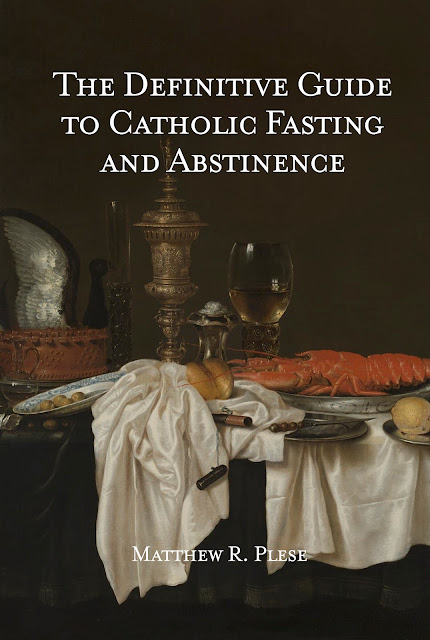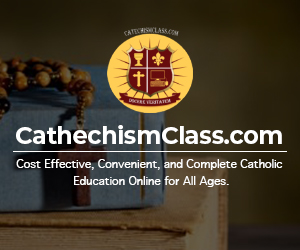Of all the seasons that the Modern Novus Ordo Catholic Calendar has neglected to properly retain and celebrate, Epiphanytide has, like Ascensiontide, unfortunately fallen by the wayside. But, for those Catholics committed to the Sacred Traditions of the past, Epiphanytide holds a special length of time. Instead of having Christmastide turn into some oddly name "Ordinary Time" (after all did anyone even really understand its purpose or its oddly split up parts through the year), traditional Catholics will celebrate Christmastide, Epiphanytide, Septuagesima, and then finally begin the penance of Lent.
So what exactly is Epiphanytide and what customs do traditional Catholics observe during this time?
Octave of the Epiphany
While the Novus Ordo calendar unfortunately only has 2 octaves, traditional Catholics will be familiar with the idea of multiple overlapping Octaves. The practice of celebrating an Octave, while not only traced to the time spent by the Apostles and the Blessed Virgin Mary awaiting the Paraclete, also has its origins in the Old Testament eight-day celebration of the Feast of Tabernacles (Leviticus 23:36) and the Dedication of the Temple (2 Chronicles 7:9). Very truly, Christ did not come to abolish the Old Law but to fulfill it.
By the 8th century, Rome had developed liturgical octaves not only for Easter, Pentecost, and Christmas, but also for the Epiphany and the feast of the dedication of a church.
After 1568, when Pope Pius V reduced the number of octaves (since by then they had grown considerably), the number of Octaves was still plentiful. Octaves were classified into several types. Easter and Pentecost had "specially privileged" octaves, during which no other feast whatsoever could be celebrated. Christmas, Epiphany, and Corpus Christi had "privileged" octaves, during which certain highly ranked feasts might be celebrated. The octaves of other feasts allowed even more feasts to be celebrated.
To reduce the repetition of the same liturgy for several days, Pope Leo XIII and Pope St. Pius X made further distinctions, classifying octaves into three primary types: privileged octaves, common octaves, and simple octaves. Privileged octaves were arranged in a hierarchy of first, second, and third orders. For the first half of the 20th century, octaves were ranked in the following manner, which affected holding other celebrations within their time frames:
- Privileged Octaves
- Privileged Octaves of the First Order
- Octave of Easter
- Octave of Pentecost
- Privileged Octaves of the Second Order
- Octave of Epiphany
- Octave of Corpus Christi
- Privileged Octaves of the Third Order
- Octave of Christmas
- Octave of the Ascension
- Octave of the Sacred Heart
- Common Octaves
- Octave of the Immaculate Conception of the BVM
- Octave of the Solemnity of St. Joseph
- Octave of the Nativity of St. John the Baptist
- Octave of Saints Peter and Paul
- Octave of All Saints
- Octave of the Assumption of the BVM
- Simple Octaves
- Octave of St. Stephen
- Octave of St. John the Apostle
- Octave of the Holy Innocents
As one can notice, the Octave of the Epiphany ranked even higher than the Octave of Christmas!
Complexity of Octaves
With the overlapping Octaves of Christmas, St. Stephen, St John, and the Holy Innocents, things could be complicated for those praying the Divine Office. Let's assume the anniversary of the dedication of the cathedral falls on December 27. What happens? In the 1962 rubrics, the feast is translated after the octave, but what happens for those following the pre-1955 calendar? Here is what the days would look like from a liturgical point of view
27 December: Dedication, Comm. of the Octave of the Nativity; Vespers of the preceding with Psalms from the Nativity, Comm. of the following, of the Octave of the Nativity and the Dedication
28 December: Holy Innocents, Comm. of the Octave of the Nativity and the Dedication; at Vespers, Psalms from the Nativity, from the Chapter of the following, Comm. of the preceding, St Thomas, the Octave of the Nativity and the Dedication
29 December: St. John, Comm. of St Thomas Becket, the Octave of the Nativity, and the Dedication; Vespers of the preceding with Psalms from the Nativity, Comm. of the following, St Thomas, and the Octave of the Nativity and Dedication.
30 December: Sunday in the Octave of the Nativity, Comm. of the Octave of the Nativity, and the Dedication; Vespers of the preceding with Psalms from the Nativity, Comm. of the following and the Octave of the Nativity and Dedication.
31 December: St. Sylvester I, Comm. of the Octave of the Nativity, and the Dedication; Vespers of the following without any Commemorations.
1 January: Circumcision, no Commemorations; Vespers of the preceding without any Commemorations.
2 January: Holy Name, Comm. of the Octave of St. Stephen; Vespers of the preceding, Comm. of the Octave Day of the Dedication
3 January: Octave Day of the Dedication, Comm. of the Octave of St. John; Vespers of the preceding, Comm. of the following Octave day of the Holy Innocents.
Season of Epiphanytide
The Sunday within that octave was up until the reforms of 1955, the feast of the Holy Family, and Christmastide was reckoned as the twelve days ending on 5 January, followed by Epiphany time, 6-13 January. The following Sundays, until Septuagesima, were named as the "First (etc.) Sunday after Epiphany".
The 1969 "destruction" in the General Roman Calendar defined Christmastide instead as extending from the Vigil Mass of Christmas on the evening of 24 December to the Feast of the Baptism of the Lord (generally the Sunday after 6 January).
While sometimes performed (but often neglected in the Novus Ordo), the Feast of the Epiphany is a time for the blessing of one's home using blessed Chalk and holy water. This traditional has a beautiful ritual in the Rituale Romanum and is described in my post:
Blessing of Epiphany Chalk.
Because the date of Easter changes each year, two seasons of the Calendar have variable lengths in order to balance (after all there can not be more than 52 weeks in the year). The Season of Time After Pentecost can have as few as 23 Sundays or as many as 28 Sundays depending on the date of Easter. This season of Epiphanytide can have anywhere from 4 to 38 days, depending on the date of Easter. If this season is short, then Time after Pentecost will be longer; and if this Season is long, Time after Pentecost will be shorter. Makes sense, right?
But the spiritual focus of the season up through Candlemas is essentially a continuation of Christmas and contemplation of the Divine Childhood. After Candlemas (February 2nd), the celebration of events of His young life gives way to a focus on His adult life.
Candlemas (The Feast of the Purification of our Lady) is another day in which the Novus Ordo calendar greatly overlooks in importance. The Feast of Candlmas, exactly 40 days after Christmas, commemorates Mary's obedience to the Mosaic law by submitting herself to the Temple for the ritual purification, as commanded in Leviticus.
The Feast of the Purification, is called Candlemas for the traditional blessing and distribution of candles on that day. It is customary to bring candles from home to be blessed -- at least 51% beeswax candles that one uses for devotional purposes (candles for the family altar, Advent candles, etc.) -- so they can be lit after dusk on
All Saints' Day (1 November), during the Sacrament of Unction, and during storms and times of trouble. Nowadays, though, for those few parishes continuing this ancient observance, the parish will provide the candles.
Mass on Candlemas is typically preceded by a procession with the lighted candles and the singing of anthems. The lighted candles are held during the reading of the Gospel and from the beginning of the Canon of the Mass to Communion.
And this Season of Epiphanytide is also the time (typically depending on the length of the season), the Feast of St. Brigid,
St. Agnes, and
St. Blaise (
on which day the Faithful's throats are blessed).
Let's remember not to neglect this season and give it our due observance. After all, those of us praying the Older Breviary will find much beauty in the hymns and antiphons during this time. More on those hymns and devotions associated with them will follow in subsequent posts.










.jpg)






+Rite+(3).jpg)
.jpg)







